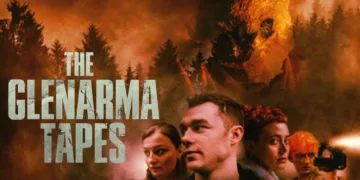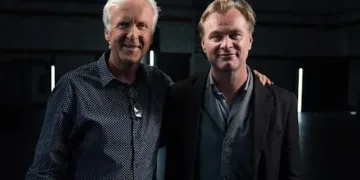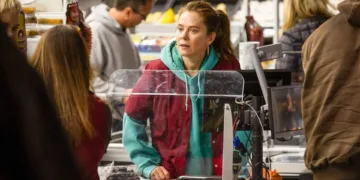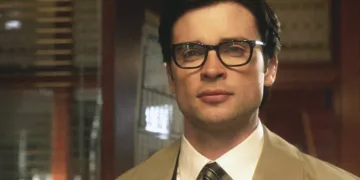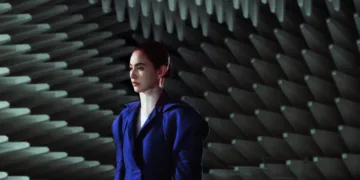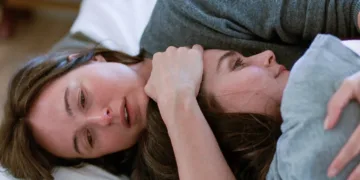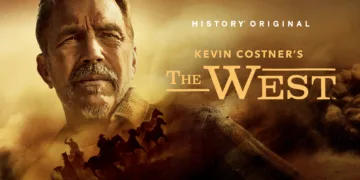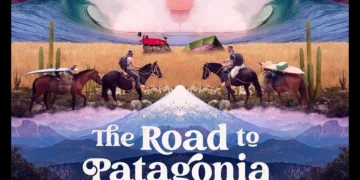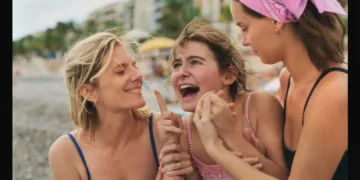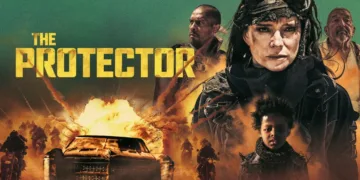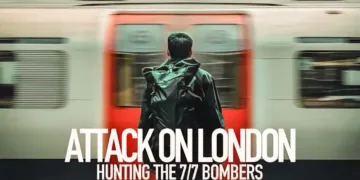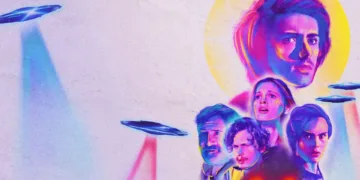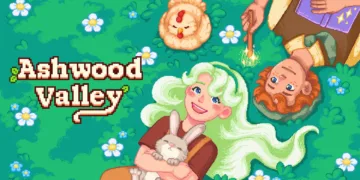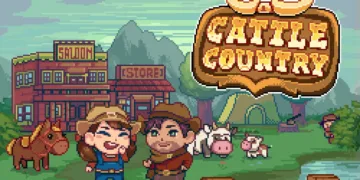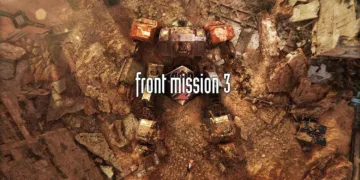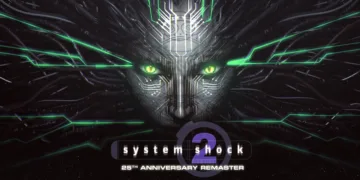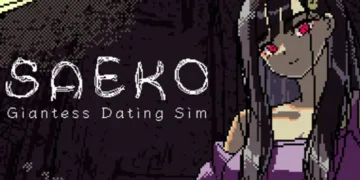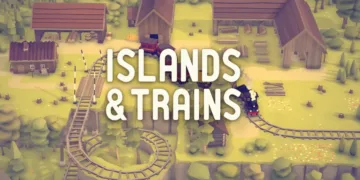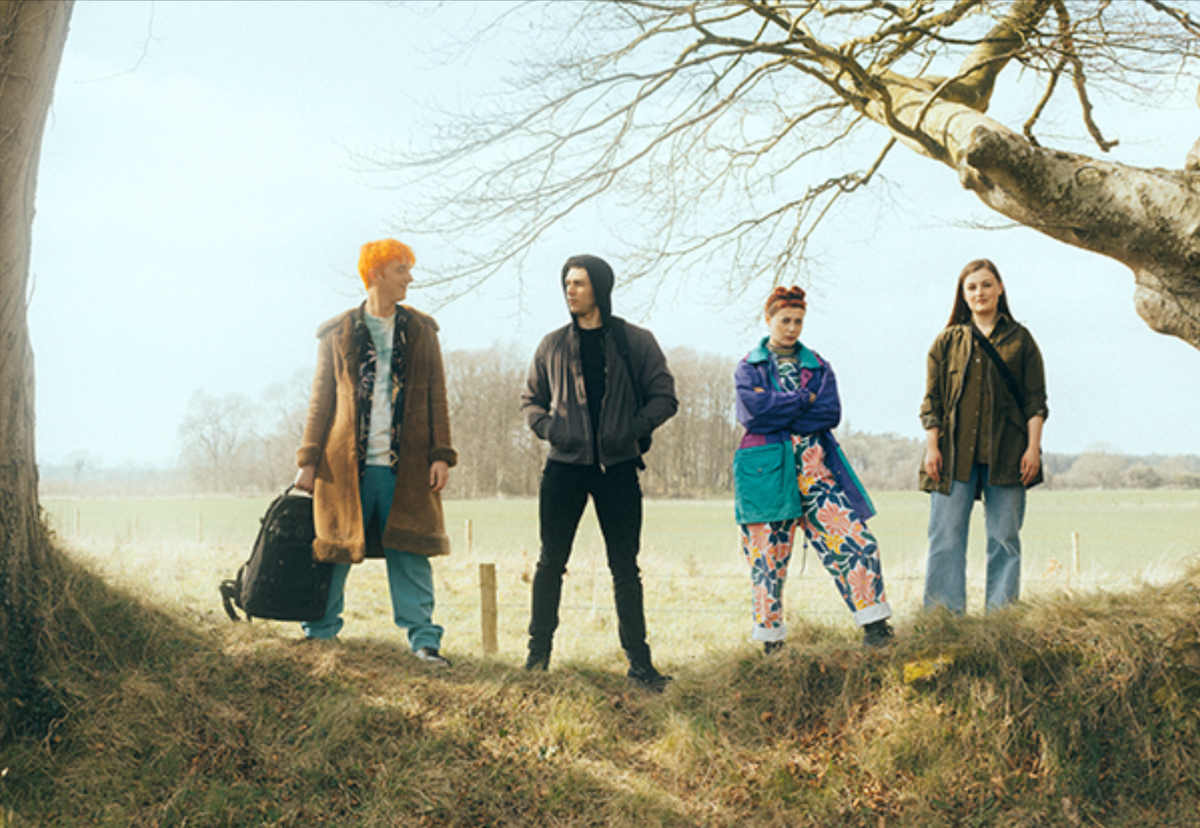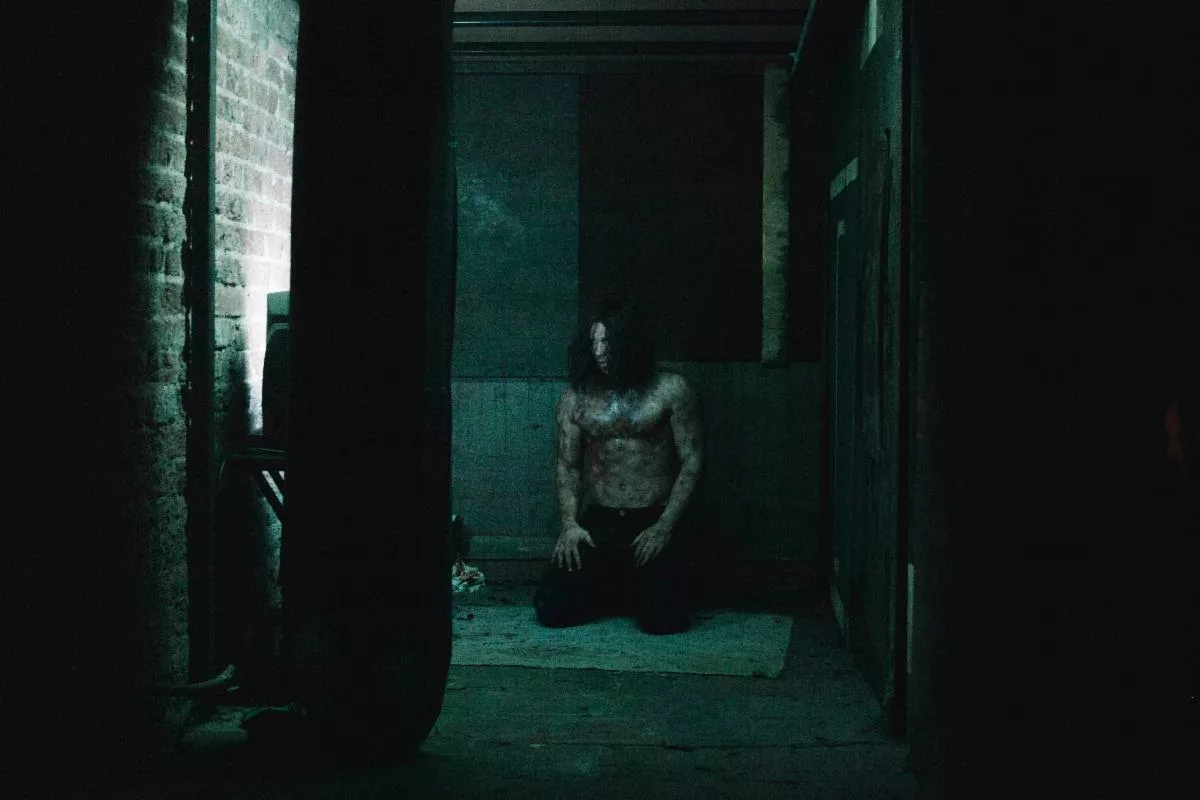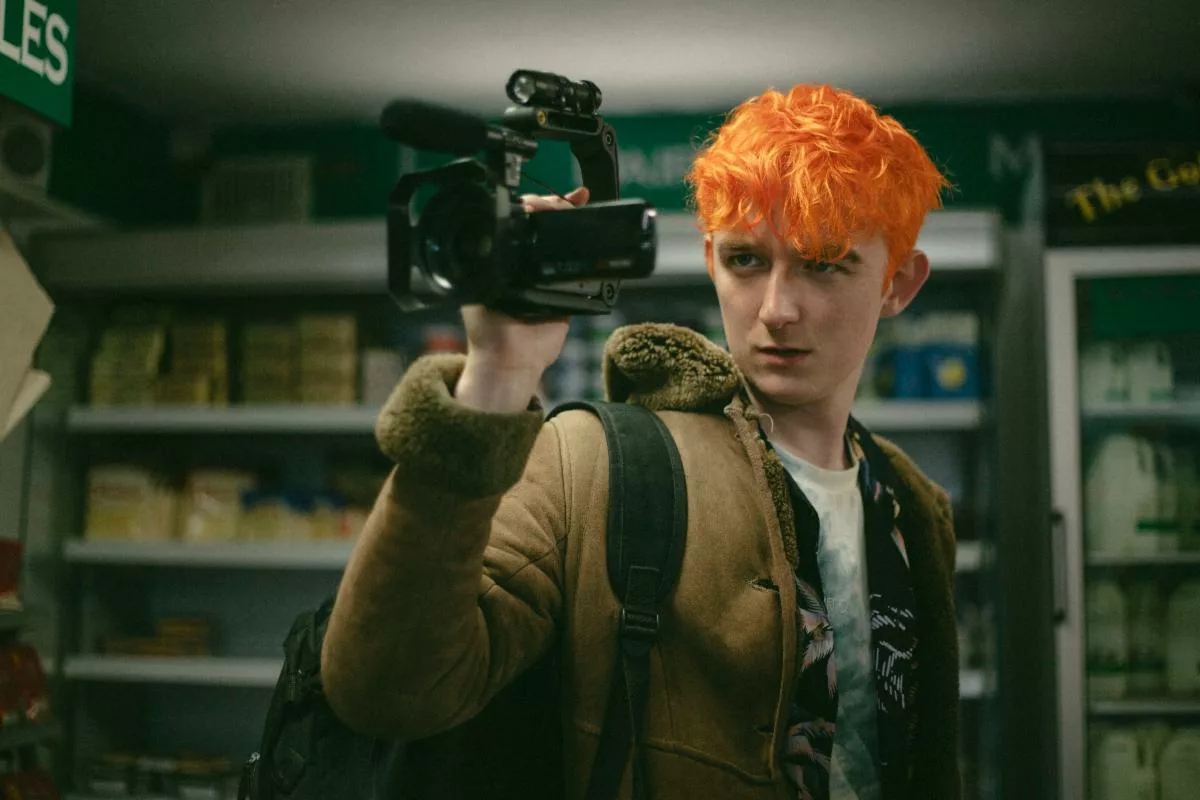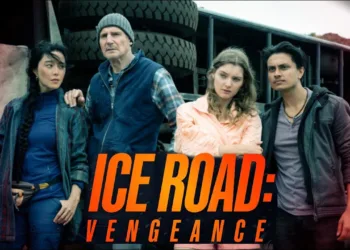Hidden deep within the dense forests of Northern Ireland lies a realm of mystery and terror. Glenarma’s tangled maze of twisting paths and shadowy trees conceals dangers that would test even the bravest souls. It is here that five college students and two teachers vanished one fateful spring, captured forever on video that would later shock the world.
On a bright March day in 2020, film student Jimmy set out to document the daily life of his friend Gordy. But little did they know that following their lecturers into Glenarma’s dark depths would lead them into a nightmare beyond imagining. Along with friends Eleanor and Clare, the group ventured into the woods, seeking laughter and adventure. Instead, they found horrors that still haunt the night. Masked figures lurked amid the trees, and rituals unspeakable corrupted the forest glades.
Piecing together the recovered footage, authorities sought to solve the mystery of what devilry could have befallen the missing in this place. Yet even their deepest searches uncovered more questions than answers. Whatever stalks the shadows of Glenarma, its evil still echoes through the screams caught on camera in a final, desperate cry for help. As Frightfest viewers will discover this year, the darkness beneath the trees has only begun to reveal its terrors…
The Friends of Glenarma Forest
Jimmy had an assignment to film a day in the life of his friend Gordy. It seemed simple enough—Gordy was happy to let his friend document him at school and home. But none of them could predict the strange events about to unfold deep in the woods.
It started when Jimmy overheard two of their lecturers talking; it seemed they planned to meet up secretly in Glenarma Forest. Now Gordy was never one to pass up a chance for a laugh. He and Jimmy figured they’d trail along behind the teachers with their cameras, hoping to catch the pair at something juicy they could use as blackmail.
They recruited some classmates to join the expedition: prickly Clare, who aimed to be a serious filmmaker, and kind-hearted Eleanor, who had a soft spot for Gordy. So, with bikes and backpacks, off into the dense forest they went. Little realizing the terrors that lurked beneath the shadowy trees.
Gordy was the sort who kept his feelings hidden under a tough exterior. But he cared deeply for his family and friends, especially Jimmy. And there was intelligence in his eyes that said he saw more than people assumed. Jimmy had talent with a camera too; he lived to document the world in all its colors.
Eleanor brought a gentle spirit to their group. While Clare kept mostly to herself, you sensed a fierce loyalty beneath her guarded surface. As different as they all were, a strong bond united these friends as the day descended into darkness.
What dangers lay waiting as the teenagers ventured further into the realm of shadow and mystery that was Glenarma Forest? Their quest for adventure was about to take a terrifying turn.
Making the Most of Found Footage
Director Tony Devlin breathes new life into the found footage genre with his use of multiple cameras in The Glenarma Tapes. He realizes the full potential of the format by having Jimmy document the day’s events from the start. But Devlin increases the immersion factor exponentially through additional portable cameras.
This allows us to follow each member of the group even when they split up, creating a real sense of their isolation as danger closes in. And it maintains mystery too, as not everyone’s experience is shown. At times, we see events unfold from different vantage points, heightening the tension and leaving some things intentionally unclear.
Devlin couples the chaotic, handheld camerawork with a vast, threatening forest that feels perfectly suited to the story. The dense woodland seems to swallow up our teens as twilight descends. Dark, clutching trees block out the failing light and loom all around like silent sentinels.
Within this murky, disorienting setting, a new peril awaits around every shadowy turn. Simple noises take on an ominous edge, preying on our imagination until the true horrors eventually emerge. Even brighter daylight fails to dispel the sense of nameless dread lurking beneath the eerie tranquility.
A standout set-piece involves the group encountering strange rituals within the woods at night, an unnerving development brilliantly captured by the multiple viewpoints. Fragmented and confusing, it taps straight into our most primal anxieties through the intimate cameras.
By making clever use of various recording tools and an unsettling natural environment, Devlin extracts maximum scares from the found footage format. His innovative techniques keep audiences fully immersed in the characters’ escalating nightmare.
Making Meaning of Misery
The Glenarma Tapes have some thought-provoking ideas simmering beneath their surface scares. Corruption and abuse of power are major themes, as seen in the gossip about adulterous teachers. Their disdainful comments show students as mere pawns in their game.
But teenage rebellion isn’t all that motivates the group’s spying mission. They face constant surveillance and judgment themselves. Jimmy dutifully records Gordy as part of a college project, yet his friend finds little privacy. At school, biases surely shape how adults perceive a problem student.
Trauma echoes long after their ordeal ends, too. Subtle details imply scars on those who survived, faced with society’s blame. And the film leaves some plot threads intriguingly unfinished, much like open wounds denied closure.
Devlin seems curious about society’s power imbalances and how they damage individuals. The tight-knit friends find fleeting solace in each other, away from oppressive watchers seeking to exploit or “other” them. Their venture into the woods, meant as a prank, swiftly transforms into a dark allegory.
Images of masked figures arranging cruel hunts and the lost teens’ helpless terror take on a disturbing metaphoric weight. Are tradition’s rituals really so different from situations forcing submission through fear every day? None are left untouched when the cracks in order are exposed, revealing nature’s true, indifferent order beneath.
The Glenarma Tapes offer no easy answers, only unsettling questions. But in grappling with sorrow’s roots and revealing humanity in its victims, perhaps we can gain understanding and sow more compassion. Its bleak imagery continues to provoke thought, like an echo from the forest, long after the final frame fades.
Gaining Empathy Through Complex Characters
At first glance, Gordy appears to be your typical troubled teen—moody and quick to anger. But Devlin peels back the layers to reveal the sensitivity beneath. From the start, our eyes are drawn to Gordy’s story through Jimmy’s diligent lens.
Their bond feels authentic—formed from shared youth yet shaped over years. Jimmy dutifully records, but deeper care lies within his craft. Scenes of Gordy shielding his overwhelmed siblings trigger our protective instincts. Though conflicts arise, their friendship prevails through understanding one another’s hearts.
We also see Gordy use keen wits to parse literature, surprising teachers with depths unseen. On the surface, there is a thirst to learn and a compassion rarely perceived. By the film’s end, none doubt his loyalty or brave acts born of love for those in harm’s way. Gordy lives beyond labels; as a whole person, our focus follows with care.
Characters like Clare and Eleanor add vibrant colors too. Clare speaks harsh truths yet cares for friends with a dry wit’s shield. Eleanor finds solace in art; her gentle spirit is a balm. Together, chemistry feels as candid as conversations in life—at times lively, others poignant.
Their humanity draws us in when terror strikes. As darkness falls, we fear that faces will become familiar. Each small gesture resonates—a squeeze of hands, final phone barriers broken for comfort. Through it all shines strength drawn from caring, not in spite of fears but because of bonds that transcend.
In uncertain times, connecting over shared hopes proves a light. The Glenarma Tapes gifts just that: glimpses into souls we cherish, who brave all with community lifting them. Its magic lies in the fleeting yet profound memories that warm our own journeys, whatever shadows may come.
Found Footage Forged Anew
It’d be simple to say The Glenarma Tapes stands with films found lost in the woods. But simplicity lacks truth—Tony Devlin’s vision breaks mold in ways that breathe fresh life.
Sure, tropes surface like ghosts called from celluloid graves. Characters stumble where danger waits, and cameras roll as terrors unfold. Yet beneath familiar frames, innovation beats.
Characters feel culled straight from life itself—quirks, cares, and all. Their relations ring as real as noon, and the reasons for recording resonate. No scares seekers they, but folks amid fast fall from funny plans to fearsome unknown.
Compare notorious names and notice the differences. Unlike witching works where panic plays a lead, community comforts in the face of fright. Even at the end, when the final reels play, solace settles where shocks may seek to hold sway. Hope emerges where heaps predict harm, a light beyond what the lights of yore could warm.
Some scenes unnerve, perhaps not as much as peers once did. Yet surprises stir just the same, and new nerves are found. What chills most stays beyond surface shows—snaps into people proving spirits lift higher than terrors try to drag low. If horror’s core is seeing pieces of ourselves in others and caring what comes, then truly this tale does its job and more.
In reworking rules well worn, Devlin grants a gift—a glimpse of souls to know and root for, come what may. His found footage films anew and does justice to craft by staying faithful to breath, which brings all stories to life. Some may cry foul, but for this viewer, the risks pay off in spades of goodness gold.
Threads That Weave a Cut Above
So, in summation, what makes The Glenarma Tapes a found footage flick that feels fresh? Plenty rests on how Devlin draws us to his clan through his care for characters.
Gordy, Jimmy, Eleanor, and Clare feel legit; their chemistry carries us with care into danger. Relationships ring so true that tensions and trials trigger tactile reactions. Devlin lets personalities bloom naturally as roadside wildflowers, rather than rushing us to brutal bits.
Threads of style stand out too. Unpredictability keeps viewers vested from start to finish. Shots snared by various cameras add authentic anarchy, boosting a sense that we peer over our shoulders into unseen terrors. Clever craft keeps consumption compulsive rather than causing consumers carelessness.
Some complain the finale fails to horrify, perhaps as progenitors, but this viewer finds value where others vilify. Devlin dares divert down diverting avenues, sidestepping the formula for a finale and forging its format anew. His fresh flair proves found footage remains ripe when creators comprehend the core: that characters, not simply chaos, are what make for nightmares that nestle under our noggins.
In the end, The Glenarma Tapes triumphs through talents tweaking tried tropes into moments that linger long after leaving the theater. Devlin demonstrates with dexterity that subgenres don’t need to grow stale when filmmakers focus foremost on the fragile folk that fill the frame. His gift guarantees this gem remains a standout in its storied style.
The Review
The Glenarma Tapes
In conclusion, The Glenarma Tapes demonstrate that found footage still holds potential for fresh thrills when backed by capable creators. Director Tony Devlin breathes new life into familiar beats through nuanced characters and an unpredictable narrative that engages until the very end. While not the scariest entry in the genre, deft direction and grounded performances make for a suspenseful ride.
PROS
- Engaging characters and strong central performances
- A palpable sense of place in the Glenarma forest setting
- Surprising plot twists that subvert found footage conventions
- An effective mix of tensions and moments of scariness
- Credible footage filming techniques
CONS
- The story falls back on some genre tropes during climactic sequences.
- May not terrify hardened horror fans accustomed to grislier films.
- Pacing lags slightly during lengthy character establishments.
